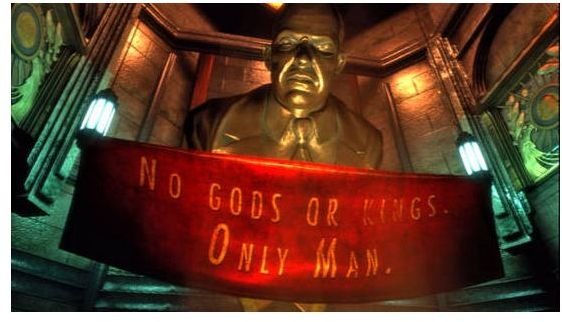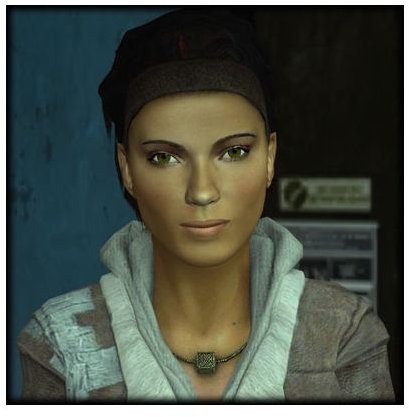The Importance of Facial Expression In Games: Cold-Hearted Blockbusters

Virtual but Real
In Neil Stephenson’s Snow Crash ordinary people have access to virtual-reality version of the Internet, accessible even from phone-booth like headsets in gas stations and malls. Users have the ability to choose their own avatar, a fully three-dimensional character that can be anything at all as long as it is roughly the size of a human being. Stephenson, tongue firmly in cheek, pokes fun at Internet culture by describing how many users will create gigantic walking dongs to represent themselves. But Stephenson also portrays a sort of class system among users which is based on the realism obtained in an avatar, with a heavy emphasis on facial expressions. The ability to accurately portray facial expressions gave an avatar an uncanny realism and showed that the user was either technically gifted or wealthy enough to hire those who were.
Snow Crash may be an adventure through an America that only the most cynical could call plausible, but the insights into the importance of expressions on virtual characters were ahead of its time. Facial animation is one of the most important fields in gaming today, but also one which is often only appreciated by those who are already inclined to notice.
Burning the Bridge to Your Heart
While games have constantly made stabs towards artistry, success in that realm remains elusive. One of the largest obstacles is tricking the player into caring about a character which is known to be entirely virtual. It is too easy to ignore the pains of virtual characters that lack any human element, and recent sandbox games illustrate that point. Remorse is not something commonly felt while running over crowds of innocents in Grand Theft Auto 4, but this is not surprising. The people roaming the streets may run, or scream, or (most likely) shout obscenities, but they are still nothing more than algorithms, reacting mathematically to all situations. Their faces are largely blank, and could just as well be covered by virtual paper bags.
GTA 4 is only one example of many. Another example would be the game Bioshock, a game trying hard to present itself as a shooter with some serious things to say. Bioshock’s most memorable scene (SPOLIER ALERT) is the confrontation with Andrew Ryan, the villain who is central to the game’s obligatory Big Plot Twist. But even in that vital scene, Andrew appears as no more than a mannequin. His facial expression is limited to smug and scornful as the player gradually murders him with a golf club, and while some of that might be attributed to Andrew Ryan’s insanity, it is still difficult to swallow his mechanical response to the blows which he knows are coming. This is a barrier to feeling the full impact of a scene which is otherwise beautifully written and scripted.
Doing It Right

There are others which have made some serious advances in the realm of facial expressions, however. The obvious leader in this realm is Valve, which with its Source engine has put a clear emphasis on the importance of the face to expressing emotion and making a connection with the player.
Half Life 2 contains the classic example of the impact facial animations can have during the scene in which Alyx Vance saves an unarmed Gordon Freeman from certain capture. The player, momentarily knocked out by a whack over the head, wakes to find Alyx’s warm face greeting him. A connection is instantly made. The same high-quality expressions are attributed to all of the characters to Half Life 2, and go a long way towards making a fantastic sci-fi story into something tangible.
But while the expressions of Half Life 2 are great, Valve’s best work is probably in Team Fortress 2. Being a fast-paced multi-player game, TF2 is rarely lauded for its animations. But they are easily some of the best in the entire gaming industry, and perfectly convey TF2’s cartoonish mood. Few facial expressions are better then the massive grin that consumes the heavy’s face as his minigun fires thousands of rounds at anything that moves.
Catch the Smile
The importance of these expressions cannot be under-stated. They allow both games to create a powerful and accurate mood which communicates directly with the player. Technically speaking, any Source engine game is unlikely to be the best looking game on the market. But games which make good use of facial animations do far more with far less. As researchers have shown in numerous experiments, expressions are contagious. The feeling of desperation which is created using layers of graphical details, excellent game pacing, and superb writing can just as easily be conveyed with an expression of desperation on a character’s face.
A feeling of happiness can also be conveyed in this way, and is perhaps one of the most revolutionary aspects of facial expressions in games. Considering the game industry’s obsession with bleak, gritty titles like Gears Of War or Bioshock, the very concept of the smile could cause a revolution in how players think of their games.
